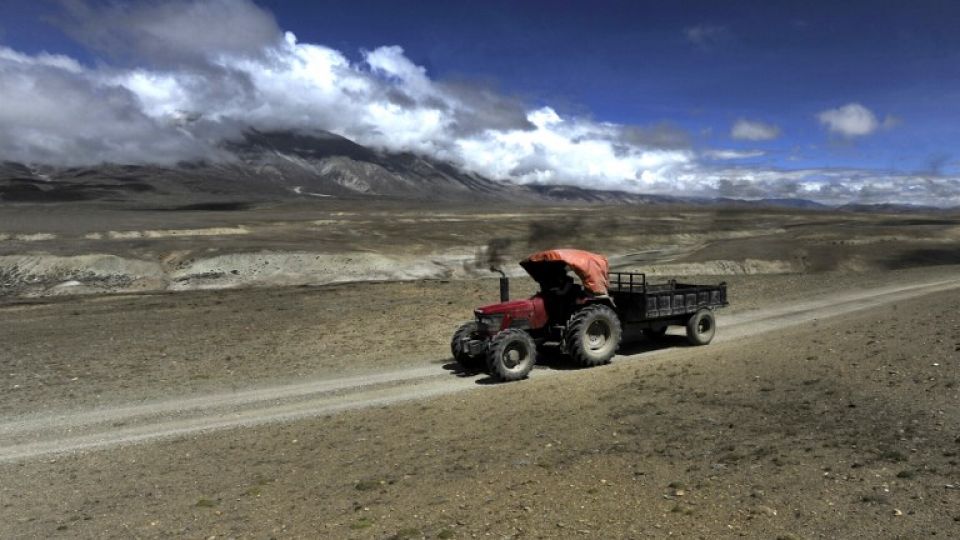May 8, 2019
Much needs to be done before Nepal can end its complete dependency on India for third-country trade.
The signing of the Protocol on Implementing Agreement on Transit and Transport between Nepal and China in Beijing last week during the state visit of President Bidya Devi Bhandari has ensured Nepal’s access to Chinese sea and land ports.
This is largely seen as a move which will end Nepal’s complete dependency on India for third-country trade.
However, officials and experts say it is a long way to go before Nepal can start using the Chinese sea and land ports.
Rabi Shankar Sainju, a joint-secretary at Nepal’s Ministry of Commerce who played a key role in finalising the text of the protocol with the Chinese side, said a lot of homework and preparation is required on the Nepali side to fully implement the protocol.
“So far, we have completed only the paperwork,” Sainju, who retired from government service recently, told the Post.
“The real challenge lies on (implementing it) the ground.”
According to the protocol agreement, Nepal can use the Chinese sea ports in Tianjin, Shenzhen, Lianyungang and Zhanjiang and land ports in Lanzhou, Lhasa and Shigatse for third-country export and import.
Beijing will also allow Nepal to carry out export and import through six dedicated transit points between Nepal and China.
But currently, only one such border point— at Rasuwagadhi — is in operation.
For Nepal, the immediate focus should be upgradation of infrastructure — road and other establishments — on its side of the border, particularly at the three trading points of Yari, Rasuwagadhi and Tatopani, said officials.
Apart from infrastructure, there are some technical issues that need sorting out, said Sainju.
“Third-country trade is a bit complicated. Nepali traders need to negotiate with shipping liners to ascertain whether the delivery will be made at the border point or at Lanzhou or Shigatse,” Sainju told the Post.
“If shipping liners cannot deliver the third-country cargo up to the Nepal border, Nepali traders have to send Nepali vehicles to ferry the goods. Since Nepali drivers are not habituated to right-hand drive, driving 400 kilometres won’t be easy.”
Shigaste is the shortest land port from the Nepal border.
“During our negotiations with the Chinese side, we had calculated that it would take at least 21 days to bring third country consignments to the Nepal border from Tianjin, the closest sea port in China [3,276 kilometres] from the Nepal border,” said Sainju.
“Otherwise, it takes generally two months from sea routes via Indian ports. So first of all, we have to start bringing goods from Chinese seaports to know the practical advantages and difficulties,” he added.
The trade and transit agreement was signed three years ago but the Nepal government is yet to train importers and the business community on trans-shipment of the consignments via the Chinese side.
With the protocol coming into effect, the immediate work is to hold negotiations between shipping liners and importers who will sort out the issues related to shipment.
The shipping liners are like agents who take the responsibility of importing and exporting of goods from the country of origin to the next destination without any damage or tampering.
Kedar Bahadur Adhikari, Secretary at Nepal’s Ministry of Commerce and Industry, said he is sending a high-level team to China headed by a joint-secretary to carry out a study on ways to utilise the Chinese sea and land ports at the earliest.
The team will visit and inspect Chinese sea and land ports that are allotted to Nepal for third-country trade and assess the costs, shipping lines and modes of transportation.
“After that, we will start discussions with Nepali traders and importers for using the Chinese ports for third-country trade,” Adhikari told the Post. “I hope it won’t take long.”
The Transit and Transportation Agreement with China was signed in 2016 with a view to diversifying Nepal’s trade and paving the way for landlocked Nepal to carry out third-country trade through the ports of its northern neighbour.
However, it took three years to sign the protocol, largely due to the lack of preparations on the Nepal side.
Two separate mechanisms, according to officials, will be established to review and enforce the protocol and resolve technical difficulties that could arise during its implementation.
“Politically speaking, the agreement has given us an alternative and an opportunity to diversify our reach,” said Purushottam Ojha, a former Commerce Secretary.
“But while executing the protocol, some issues need to be sorted out,” he iterated.
According to Ojha, “the first and foremost concern” is border infrastructure.
The second hassle is the mode of transportation and the third, cost.
“Fourth is about non-tariff barriers, administrative hassles and documentation,” Ojha told the Post.
“Then we will have to look at the fees and charges. We have to consider all the variables while implementing the agreement,” he added. “It’s not easy to import goods from Tianjin, which is 4,000 kilometres from the Nepal border.”
Rajesh Kaji Shrestha, president of the Nepal-China Chamber of Commerce and Industries, said he was unaware as to when the protocol comes into effect.
“The signing of the protocol to the agreement is a welcome move, however, and now we have alternatives.
“But our concern is that railway cargo in China should be competitive.
“There are also concerns about expensive cargo facilities while bringing them via China,” he said.


